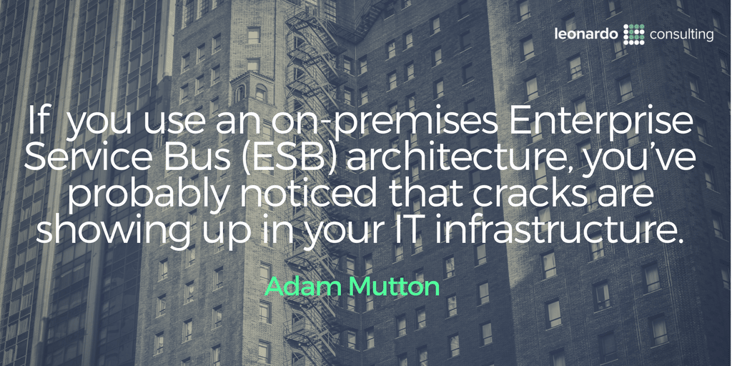
Do you use an on-premises Enterprise Service Bus (ESB) architecture to integrate applications and services? If so, you’ve probably noticed that cracks are showing up in your IT infrastructure. This will accelerate as more applications migrate to the cloud. Chances are, you’ve invested heavily in these solutions and are reluctant to replace them.
There is a way to extend your investment and achieve a more modern architecturethat can handle the complexity of today’s more demanding data, platforms and business systems. First, it makes sense to review the reasons you may want to begin modernising your on-premises legacy middleware solutions today.
A primary reason is reducing the total cost of ownership (TCO) of your current ESB/ Integration solution.
Answering these 5 questions will give a better understanding of the overall cost you might be incurring now with your aging middleware solutions, as well as future upgrades you might be undertaking or planning to pursue.
1. Are you factoring in operational expenditure? (OPEX)?
When calculating the costs of integration platforms, companies typically consider only the capital expenditure angle, but OPEX can be significant. In addition to the hardware and software costs outlined in your budget, take a look at the expenses associated with DIY development.
2. What are your compliance and security costs?
If your data includes personal health or financial information like credit card numbers, you’ll have to invest in certifications to demonstrate that you’re compliant with data privacy and security regulations like PCI and HIPAA.
3. What is the real cost of developer productivity?
Another important consideration is the rising cost of employing and retaining iPaaS developers, which offsets productivity gains.
4. What does it cost to accommodate new data sources and formats?
To calculate the overall costs of ESB ownership, you must factor in the expense of dealing with new data streams and formats.
5. What does ESB cost in terms of lost opportunities to innovate?
The IT professionals who are engaged in integration don’t have time to focus on more strategic tasks and gaining insights to advance your business and meet your customer needs. This type of expense is almost never factored into the total cost of ESB ownership. It should be.




